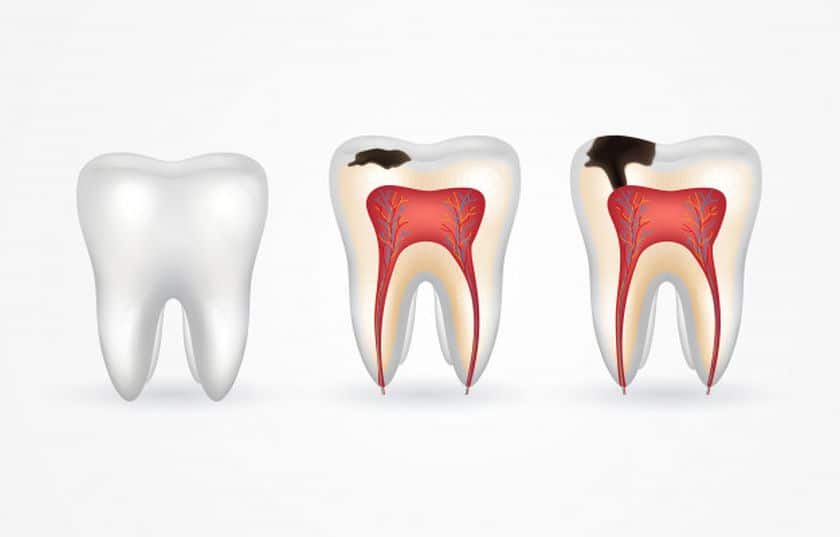Tooth decay is an extremely common dental condition and might strike us at some point in our lives. It could be formed due to several reasons and might lead to dental health complications as well. Plaque is the leading cause of tooth decay and its removal is essential for maintaining a healthy mouth.
The Stages Of Tooth Decay
Did you know that tooth decay progresses in stages? You could reverse the decay if detected in its earlier stage. We, at Floss Dental, have always been committed to educating our clients regarding dental health. This blog will help you to identify the various stages of tooth decay and take action accordingly. Let us take a look at them.
White Patches
In the initial stage, white spots begin to appear. They are usually under your enamel, but they are pretty visible on the surface of your teeth. This is a sign that there is massive demineralization of your teeth. This is one of the signs of your oral health that you should not ignore. They are usually hard to identify and only a thorough dental checkup can lead to its diagnosis. It is in this stage that you can reverse the process of decay. You must use toothpaste that helps in mineral fortification to remineralize your teeth.
Decaying Enamel
Repeated acid attacks can lead to serious erosion in your enamel. When your enamel starts to erode, lesions develop on your teeth. Enamel starts weakening from the underside outward, and very soon might expose your dentin. Excessive sensitivity and tooth discoloration could be the signs of decaying enamel. Fluoride treatments and toothpaste targeting sensitivity might do the trick for some. If you are wondering how are cavities formed, then this is your answer. It starts from this stage. However, you must consult your dentist for other options such as dental sealants or fillings.
Dentin Decay
At the third stage, the decay has progressed to your dentin and keeps attacking it. Allowing it to advance further can damage your pulp. It is best to stop the issue at this stage and prevent its progression. You will be experiencing pain and hypersensitivity. This is when the enamel completely collapses and leads to the formation of a cavity. Talk to the dental care professional and opt for restorative services to prevent the issue from worsening.
Infection Reaches The Pulp
If your dental pulp is affected, then it might be extremely fatal for your dental health. The pulp is full of nerves and you might experience an excruciating toothache. A root canal is the only option for saving the decaying teeth, following which a dental crown can be placed to reduce further damage.
Abscess
In the final stage, severe decay sets in and results in pockets of pus. In this stage, the infection can affect the entire jawbone and surrounding tissues. This is when the decay has moved beyond the pulp and has the potential to spread to the rest of your teeth. A root canal could fix it, but depending on the severity, an extraction might be your only option.
Now that you know the stages of tooth decay, do not wait for it to advance. Just consult the dentist and get it treated on time. Have further queries? Book an appointment in our dental clinic at Sugarland, TX, and avail the best dental care services today!
